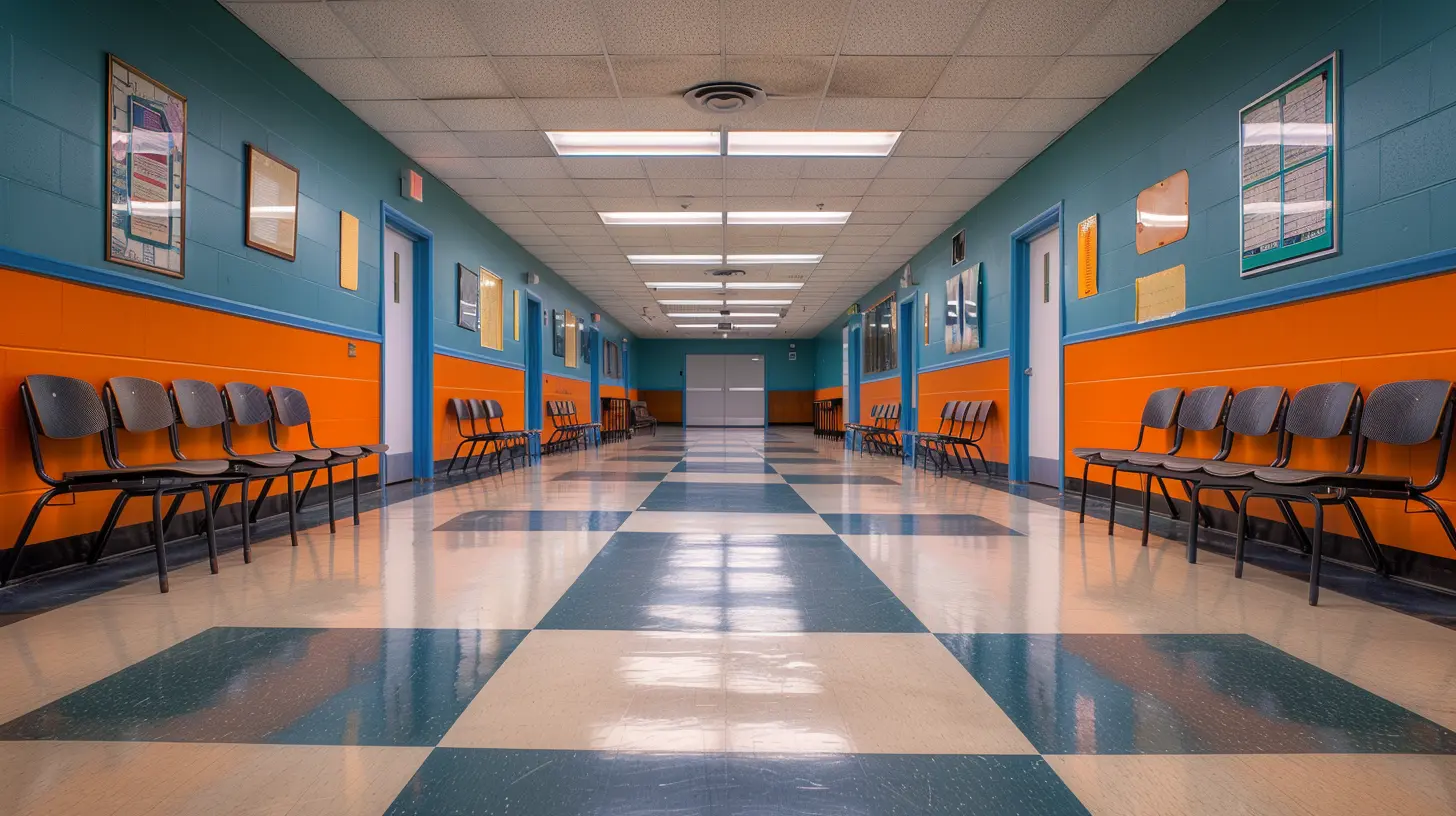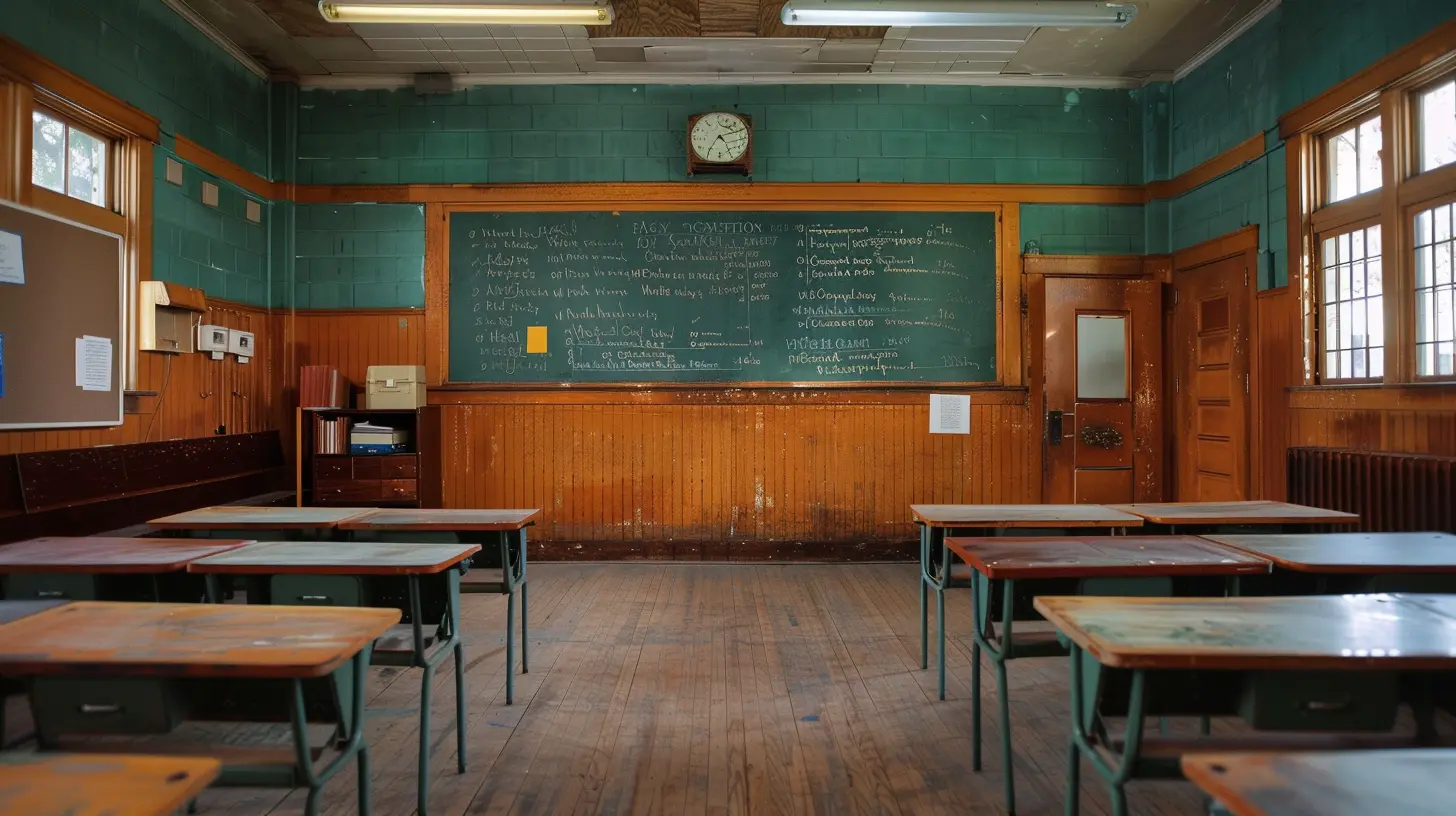How School Funding Impacts College Readiness Programs
19 November 2025
Let’s be honest — money talks, especially when it comes to education. While we all want to believe that hard work and determination are enough to help students succeed, the truth is, without proper funding, schools face an uphill battle. And when it comes to prepping students for college? That battle becomes a full-blown war.
So, what’s the connection between school funding and college readiness programs? It’s deeper than you might think. From qualified teachers and up-to-date textbooks to SAT prep classes and college counseling, nearly every part of college readiness hinges on one thing: the almighty dollar.
In this article, we’ll pull back the curtain and take an unapologetic look at how money (or the lack of it) impacts students' journeys toward higher education. Buckle up — because what you’re about to read might just change the way you think about education in America.
What Does “College Readiness” Really Mean?
Before we dive into the money talk, let’s clear something up — what exactly is “college readiness”?In plain English, college readiness means a student has the academic skills, personal habits, and emotional resilience to not just get into college, but to thrive there. We’re talking strong reading, writing, and math skills, sure — but also critical thinking, time management, and someone to help them figure out what FAFSA even means.
Spoiler alert: That kind of preparation doesn’t just happen overnight. It starts in K-12 schools. And those schools need funding — lots of it — to make it happen.
The Direct Link Between School Funding and Student Success
Picture two high schools. School A is in a wealthy district with a boatload of funding. School B? It’s scraping by, located in an underfunded area where even basic supplies are in short supply.Now imagine which school has more AP classes, a full-time college counselor, SAT prep workshops, and partnerships with local universities. Yup — School A. No contest.
This isn’t just theory. Study after study shows that schools with more funding provide better academic environments. Students in these schools are more likely to graduate, more likely to go to college, and more likely to be ready for it when they get there.
So what’s the secret sauce? Let's break it down.
Quality Teachers Don’t Work for Free
Want to know the single most important factor in student achievement? Teachers. High-quality, passionate, and experienced teachers make a huge difference in how well students perform.But guess what? Great teachers aren’t cheap. Competitive salaries, ongoing training, and manageable class sizes all require — you guessed it — funding.
Underfunded schools often struggle to attract and retain qualified educators. That means more burnout, more teacher turnover, and fewer experienced mentors helping students gear up for college.
Would you want to learn calculus from someone who’s juggling five classes, working a second job, and using 20-year-old textbooks? Thought so.
College Counselors Are the Missing Link
Ever tried navigating the college application process without help? There’s FAFSA, Common App essays, financial aid, scholarships, deadlines, and choosing the right school — all while trying to pass your classes. It’s like trying to run a marathon... in flip-flops.This is where college counselors come in. They’re the guides, the translators, and sometimes even the therapists in a system that can overwhelm even the savviest students.
But here’s the kicker: Many underfunded schools either don’t have college counselors or assign one counselor to hundreds of students. It’s no wonder kids fall through the cracks.
Meanwhile, better-funded schools often have full-time college advisors who start working with students as early as ninth grade. That kind of individualized attention is a game-changer.
Advanced Courses and Test Prep? Only If You Can Afford It
Let’s talk about the big buzzwords: AP classes, dual enrollment, SATs, ACTs, and prep courses. These things matter — a lot — when it comes to college readiness.Students who take advanced courses are more likely to succeed in college. Not only do they earn credits early, but they also build the grit and academic muscle needed for college-level work.
But here’s the problem. Offering these programs isn’t cheap. AP courses require trained teachers and curriculum materials. Test prep classes? They can cost hundreds, sometimes thousands of dollars.
Many affluent schools can afford to subsidize these opportunities, while students in low-income schools are left with whatever’s free — which usually isn’t much.
So if school funding determines whether a student has access to advanced courses or professional SAT help, can we really call the college admissions process fair?
Extracurricular Activities: The Secret Sauce of College Applications
Believe it or not, college readiness isn’t just about grades. Admissions officers want well-rounded students — the ones who lead clubs, play sports, perform in theatre, or volunteer in their communities.But here’s the deal: after-school programs, arts funding, and even basic sports equipment cost money. Lots of it.
Funding cuts often mean these “non-essential” programs are the first to go. That leaves students without the chance to explore their passions, boost their resumes, or stand out during the admissions process.
Bottom line? School funding shapes more than just academics — it determines whether a student can shine beyond the classroom.
Building a Culture of College-Going
Have you ever walked into a school that breathes college pride? Banners from Ivy League schools line the hallways, seniors wear college sweatshirts, and everyone’s talking about majors and dorm life. That kind of culture doesn’t happen by accident — it’s intentional and, yup, it’s funded.Creating a college-going culture means hosting college fairs, offering campus visits, organizing guest speaker events, and embedding college talk into everyday learning. It's harder to do this when you're more worried about keeping the lights on.
When schools are underfunded, they simply don't have the bandwidth to cultivate that kind of environment. And as a result, college starts to seem like someone else's dream — not theirs.
Disparities in Funding = Disparities in Opportunity
Let’s cut to the chase — the American education system is riddled with funding inequality. Schools in wealthy areas funded by high property taxes thrive, while schools in low-income districts — often serving students of color — struggle with the bare minimum.These disparities aren’t just unfair. They're systemic. And they’re robbing millions of bright, capable students of a shot at college success.
It’s not just that rich schools have more stuff. It’s that they have the resources to nurture, support, and launch students toward a future filled with opportunity. Poor schools? They’re too busy surviving to start dreaming.
The Ripple Effect: From the Classroom to the Workforce
College readiness doesn’t just influence whether someone earns a degree. It shapes their entire future — from career prospects to income levels to long-term success.When schools fail to prepare students for college, we all pay the price. Fewer trained workers enter the workforce. Innovation stalls. Communities suffer. The cycle of poverty continues.
In a world that increasingly rewards higher education, failing to invest in school funding is like trying to win a race with no shoes. It doesn’t work — and it’s entirely avoidable.
So, What Can be Done About It?
Alright, we’ve laid out the problem — now let’s talk solutions. While it’s easy to point fingers, we need real, actionable change. Here’s where we start:- Equitable Funding: States must rethink how they allocate school dollars. Funding based on student need — not ZIP codes — is a must.
- Invest in Counselors & College Advisors: Every student should have access to adults who can help them navigate the path to college.
- Make Test Prep Accessible: SAT/ACT prep should be a right, not a privilege.
- Support Extracurriculars: These programs are essential, not extras.
- Push for Policy Change: If you’re a parent, teacher, voter — speak up. Policy makers will only take action if we demand it.
Final Thoughts: Money Isn't Everything — But It's a Start
Look, no one’s saying that money alone will solve all our educational woes. But ignoring the impact of funding is like ignoring the engine when your car breaks down. You can paint the outside and buy new tires, but it ain’t going anywhere without the gas.If we truly want to give every student a fair shot at success, we have to fund our schools like it. That means treating college readiness not as a luxury, but as a necessity — for every kid, in every neighborhood.
Let’s stop pretending that grit and determination alone can level the playing field. Until we fund schools honestly, equitably, and aggressively, the dream of college will remain just that — a dream — for far too many.
all images in this post were generated using AI tools
Category:
School FundingAuthor:

Madeleine Newton

